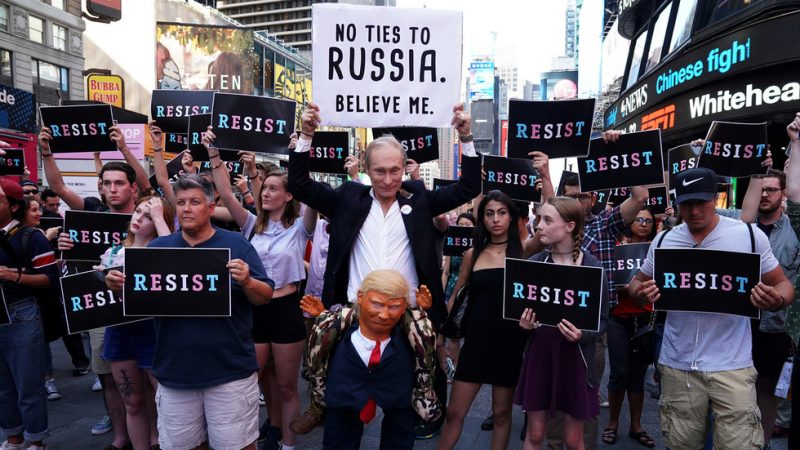
New documents show the FBI was aware that the infamous dossier used as a pretext to spy on President Donald Trump’s campaign was unreliable, and that the New York Times published false information about the ‘Russiagate’ probe.
The two documents were published on Friday by the chairman of the Senate Judiciary Committee, Lindsey Graham (R-South Carolina), as part of an ongoing probe of the FBI’s investigation of Trump.
One is a 59-page, heavily redacted interview of the “primary sub-source” for Christopher Steele, the British spy commissioned through a series of cut-outs by the Hillary Clinton campaign to dig up dirt on Trump during the 2016 election campaign.
While the identity of the source is hidden, the document makes it clear it was not a current or former Russian official, but a non-Russian employee of Steele’s British company, Orbis.
The source’s testimony seriously questioned the claims made in the dossier – which is best known for the salacious accusation that Trump was being blackmailed by Russia with tapes of an alleged sex romp in a Moscow hotel.
The second, and more intriguing, document is a five-page printout of a February 14, 2017 article from the New York Times, along with 13 notes by Peter Strzok, one of the senior FBI agents handling the Russiagate probe.
The article was published five days after the FBI interview with the sub-source, and Strzok actually shows awareness of it (in note 11, specifically).
In the very first note, Strzok labeled as “misleading and inaccurate” the claim by the New York Times that the Trump campaign had repeated contacts with senior Russian intelligence officials before the 2016 election, noting there was “no evidence” of this.
Likewise, Strzok denied the FBI was investigating Roger Stone (note 10) – a political operative eventually indicted by Special Counsel Robert Mueller over allegedly lying about (nonexistent) ties to WikiLeaks, whose sentence Trump recently commuted to outrage from ‘Russiagate’ proponents.
Nor was Trump’s campaign manager Paul Manafort on any calls involving Russian government officials, contrary to claims by the Times (note 3).
Not only did the FBI know the story was false, in part based on the knowledge they had from Steele’s source, but the recently ousted FBI director Jim Comey had openly disputed it in June 2017. The paper stood by its reporting.
Interestingly, June 2017 is when the FBI and DOJ signed off on the last extension of the FISA warrant to spy on the Trump campaign via adviser Carter Page.
The warrant was signed by acting FBI director and Comey’s former deputy Andrew McCabe and Deputy Attorney General Rod Rosenstein – who wrote both the memo used to fire Comey and the scope memo for the Mueller investigation.
Evidence has shown that the initial FISA warrant against Page – in October 2016, shortly before the election – and the three renewals all relied heavily on the Steele Dossier, without making it clear to the court that it was unverified opposition research compiled at the behest of a rival political party.
Mueller eventually found no “collusion” between Trump and Russia as alleged by the Democrats, but not before a dozen people – from Stone and Manafort to Trump’s first national security adviser Michael Flynn and innocent Russian student Maria Butina – became casualties of the investigation.
The last two renewals, in April and June 2017, were requested after the sub-source interview. Commenting on the document release, Sen. Graham called these two renewals a “miscarriage of justice” and argued that the FBI and the Department of Justice should have stopped and re-evaluated their case.
Published by RT.com
Republished by The 21st Century
The views expressed in this article are solely those of the author and do not necessarily reflect the opinions of 21cir.
